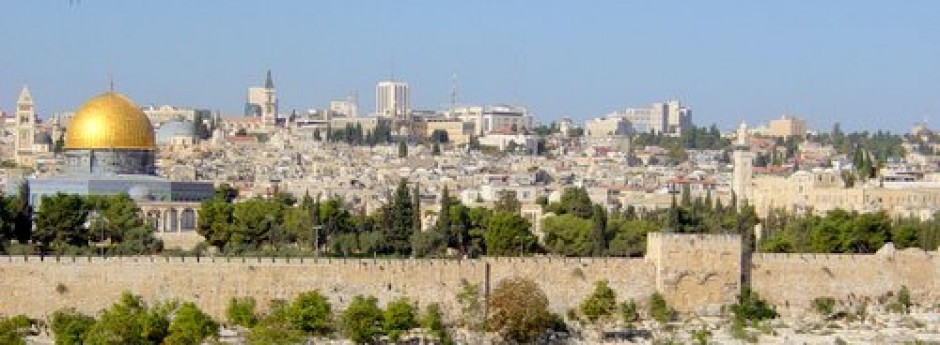-7-
Christians In Search Of Their Roots
We live in a rootless society. Today many people live far from their physical roots. They are far from their families and sometimes even from their home countries. Thus, there is a great need in our society for people to be a part of something, to feel attached.
This need was expressed in the 70’s by the American author Alex Haley, in his book Roots. In the book, Haley sought to portray his own roots, generations ago with his slave ancestors from Africa. The book gained wide popularity and was later turned into an eight-part TV miniseries. The miniseries became one of television’s most-watched dramatic telecasts, with a reported 130 million viewers. 1
The search for roots, whether it be Alex Haley, the average TV viewer, or modern Christians, is a very important endeavor. Today there are thousands of Christians who are seeking their spiritual roots. Many may be seeking them because of the deadness and disappointment they often find in the churches.
At present, the Gentile Church in many places is much like a bouquet of cut flowers. It may still look pretty, but it has no roots. There is little nourishment or sustenance. In early centuries, the Church’s rich Hebrew heritage was subtly exchanged for a Greek one, for most of our early church fathers were Greek, Greek speakers or at least Greek thinkers. In modern times, the church has gone to Madison Avenue and to many other places to find its missing vitality. All these attempts have failed miserably.
What the modern church has not realized is that the vitality has always been available. There is an unrecognized source of supply – a wellspring of life and learning for the taking. However, we should be forewarned that the continuation of this search may reveal some shocking facts about our own family tree!
SHOCKING FACTS ABOUT OUR FAMILY TREE!
The Bible makes it clear that Christianity does not stand on its own. It has been a long-hidden secret, but the secret is now out. In fact, the Apostle Paul actually revealed this secret centuries ago. What is the secret? It is this — Christianity is Jewish! Paul makes it plain that the Gentile Church is “grafted” into the Jewish olive tree and that it does not stand alone. Paul says in Romans 11:17-18:
If some of the branches have been broken off, and you, though a wild olive shoot, have been grafted in among the others and now share in the nourishing sap from the olive root, do not boast over those branches. If you do, consider this: You do not support the root, but the root supports you.
This is an absolutely astounding statement. How could we have missed it for so many centuries? Paul is saying that in a way unknown to us, Israel supports the whole Church and has always done so. This may be news even for those Israel boosters in the Church. They do not support Israel, but Israel supports them. Israel has been the support of the Church for almost two thousand years, despite the Church’s anti-Semitism and outright persecution of Israel. It was God’s plan that the sap or nourishing juices of the old Hebrew olive tree would supply the Church. In other words, we draw from a very rich heritage.
Let us stop a moment to consider the picture Paul is using here. The olive tree is one of the longest-living trees on earth. Some believe the giant, gnarled olives trees standing in the Garden of Gethsemane may have been alive at the time of Christ. The olive is also a very hardy tree, and it is practically indestructible. If cut down, it will probably grow back and live another thousand years. 2

An ancient olive tree in the Garden of Gethsemane
We see in Genesis 8:11, that the olive tree apparently withstood the flood quite well, because the dove brought Noah a freshly plucked olive twig after the deluge. The olive is a tree that gives great stability, for the gnarled trunk is often quite large and sturdy.
The tree grows in abundance over most of Israel. It seems to thrive in many different types of soil and in varied weather. The tree grows in the highlands or lowlands; it grows in the wet or dry, cold or hot; and even in the shallow rocky soil around Jerusalem.
The connection of the olive tree with Israel is an old one. The prophets Jeremiah and Hosea mention it (Jer. 11:16 and Hos. 14:6). In Hosea, God speaks of the beauty of the olive tree. It truly is an attractive tree with its silvery leaves blowing in the breeze. It is particularly delightful when loaded with fruit. The olive is a very fruitful tree, even when it receives a minimum of care. The amazing thing is that its fruitfulness can continue on for many centuries.
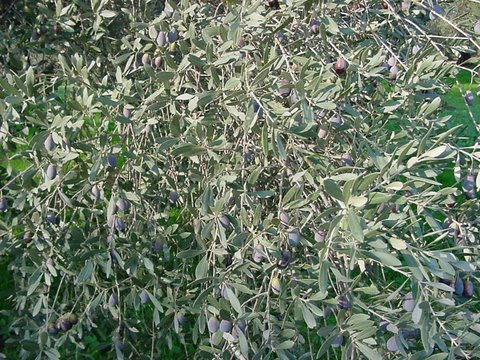
Tree hanging with ripe olives
(Photo credit Peggy Steffel)
In ancient times the main product of the tree, olive oil, was used as a primary food source. It was also used for anointing, for healing and for light. Therefore the olive tree is literally the tree of light, and the light speaks of revelation. The Bible tells us that where there is no revelation, people perish (Prov. 29:18). The anointing and healing, like the light, speak of other greatly needed works of the Holy Spirit. Also, since the days of Noah, the tree has symbolized peace, reconciliation and restoration (Gen. 8:11).
Today the Church is in great need of all these things. We need the light of new and clear revelation to give us direction in the maze of this modern world. The churches are starving for true anointing and for physical and spiritual healing. We desperately need reconciliation. This is particularly needed in relation to the Jewish people. We must remember that these things are freely provided in our roots and are available for all believers today.
A RICH AND ANCIENT HERITAGE
Years ago when I went to college as a young man, I was immediately shocked by the remarks of some scholars. Some of them spoke about Christianity as being a very young religion. This information was devastating to me since I had always considered Christianity as being very old. My shock simply grew out of a misunderstanding of my own faith.
When we realize that Christianity is founded upon Judaism, it is then that we realize how ancient our faith really is. For instance, many Christians are now realizing that the Lord’s Supper is a part of the ancient Passover seder. The seder is certainly one of the oldest continuous religious celebrations on the face of the earth. For this reason, thousands of Christians are lately participating in seders attempting to learn more about the roots and richness of their own faith.
For the same reasons Christians are now celebrating along with Israel in many of her feasts. Each year in Israel, thousands of Christians come from all over the world to join with Israel in celebrating the Feast of Tabernacles (Sukkot). This celebration is sponsored by the International Christian Embassy in Jerusalem. Christians are also coming to Israel for the Feast of Pentecost (Shavuot) sponsored by Christian Friends of Israel. Participation in these festivals simply makes the old dusty pages of the Bible come to life in the present day.
There are many Christians who now celebrate the Sabbath (Shabbat) in order to learn more about God’s rest. In Hebrews 4:9 we read, “There remains, then, a Sabbath-rest for the people of God…” For those many Christians living in Israel, this celebration is almost obligatory since the nation of Israel virtually shuts down for the Sabbath. Even some Christian worship services are held on this day just as they may have been in the
first century.
Does this all sound strange? It shouldn’t. After a long winter, the sap is simply rising from the old tree into the engrafted branches. When we carefully read our New Testament we realize that Jesus and the earliest Christians also celebrated these feasts, as well as the Sabbath. For instance, we have a record of Jesus celebrating the Feast of Tabernacles and giving important teachings during the celebration (Jn. 7:14-44).
Thus Jesus and the earliest Christians celebrated the feast and kept the Sabbath as any good Jews would do. They were simply enjoying and appropriating their rich Hebrew heritage. When we read some of the New Testament books like Hebrews, for instance, we realize that the authors had understanding far beyond what we have today. They thoroughly understood the Hebrew scriptures and the Hebrew heritage. They drew their materials from a gold mine of Hebrew information.
We do not have to reflect long to realize that our Bible was both written and delivered to us by Jews. There is only one author, Luke, who was probably not Jewish. Our beloved Messiah was not only Jewish but was delivered to us by Jewish parents, announced by Jewish prophets, and he sprang from a totally Jewish culture and setting. Of course, the earliest Church was Jewish to the core. Our teachings and concepts are likewise Jewish.
When we cut ourselves off from the richness of our Hebrew heritage we become empty. We are left to improvise from the world and culture around us. Perhaps this is partly what the prophet is speaking of in those mournful words of Amos 8:11-12:
“The days are coming,” declares the Sovereign LORD, “when I will send a famine through the land– not a famine of food or a thirst for water, but a famine of hearing the words of the LORD. Men will stagger from sea to sea and wander from north to east, searching for the word of the LORD, but
they will not find it.
WRONG IDEAS OF ISRAEL AND THE JEWISH PEOPLE
The land of Israel for many Christians is just that place that the preacher visited last year with his tour and took all those lovely slides. Perhaps once in a lifetime some Christians might venture to the Holy Land, at least if things are peaceful and there is no trouble brewing.
When the average Christian comes to Israel it is often primarily just to “see where Jesus walked.” However, if Jesus is the Messiah, and the Messiah is the restorer of Israel as we read in Isaiah 49:6, we need to wake up to some new realities. We should not only want to see where Jesus walked, but we should want to see where he is walking, in the restoration of the nation. In fact, the land of Israel is called Immanuel’s land, as we see in Isaiah 8:8.
Christians also often come to Israel with a sense of pride, feeling that they have all the truth and the Jews have none. They express this condescending attitude in numerous ways. A particularly galling one is the disinterest they often show toward the many Jewish historical sites. This betrays a misunderstanding of what it means to be grafted into Israel. If we share a common heritage, then we also share a common history and a common land.
“Unfortunately, the Church has often spiritualized the concept of land so that the earthly Canaan has evaporated into an ethereal, heavenly Canaan.” 3 The Jews can teach us much here. For them it is a mitzvah or good deed to live in the actual land of Israel and to even be buried in the land. Jews have been instructed to leave a corner of their houses unpainted as a way of remembering and longing for Zion. 4
When we spiritualize the land of Israel we cut ourselves off from our ancient roots. We separate ourselves from the people of Israel. In doing so, we overlook hundreds of verses in the scriptures that talk of the actual land of Israel and its importance, even for us Christians. We forget that our Messiah is coming back to a literal place, a literal land, a literal people and he will set his feet down on a literal Mount of Olives.
Unfortunately we have looked upon the Jewish people as a people cursed and cut off from God’s plan. Through our doctrines of triumphalism we feel that we have replaced the Jews entirely. Thus, the Jews per se are of little interest to the average Christian. We often feel that we have all the revelation and they have none. We forget that they were the only people in history to have a direct audience with God. They have much to teach us.
MAINTAINING A PROPER ATTITUDE
In Romans 11:18-21, Paul warns us about keeping the proper attitude toward Israel.
Do not boast over those branches. If you do, consider this: You do not support the root, but the root supports you. You will say then, “Branches were broken off so that I could be grafted in.” Granted. But they were broken off because of unbelief, and you stand by faith. Do not be arrogant, but be afraid. For if God did not spare the natural branches, he will not spare you either.
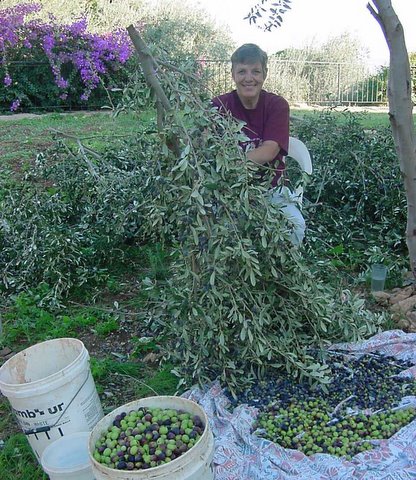
Christian volunteer picks olives in the Galilee.
(Photo credit Peggy Steffel)
After almost two thousand years of belittling, defaming, and persecuting Israel, it is difficult for us to understand and heed his instructions.
It might be good for us in light of the dismal history of Jewish Christian relations, to stop and consider a few cardinal truths about Israel. Our lineage goes back to Abraham as is pointed out in many places in scripture. We are the seed of Abraham (Gal. 3:29). In Genesis 17:4, God promised that he would make Abraham the father of a multitude of nations (goyiim).
God never removed all the natural branches (Israel), but only some of them as we see in Romans 11:17. The root of Israel is still holy, regardless of what anti-Semites have taught for two thousand years (Rom. 11:16). Israel is loved on account of the patriarchs (11:28). God’s gifts and call are irrevocable (11:29). In Romans 9:4-5, we see that to the Israelites pertain many things: “...the adoption as sons…the divine glory, the covenants, the receiving of the law, the temple worship and the promises. Theirs are the patriarchs, and from them is traced the human ancestry of Christ…”
It might even shock us to realize that the New Covenant, in which we take so much pride, is a covenant made with Israel. In Jeremiah 31:31 it is said: “‘The time is coming,’ declares the LORD, ‘when I will make a new covenant with the house of Israel and with the house of Judah.’” We are beneficiaries of this covenant solely because we are grafted into Israel. It is not a covenant made separately with Gentile people.
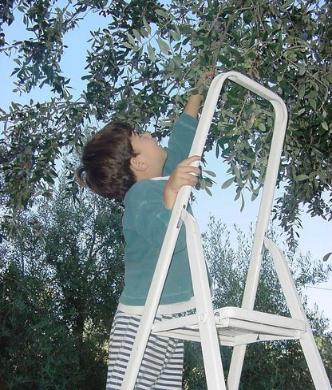
A very young olive picker tries his hand
(Photo credit Peggy Steffel)
GETTING TO THE ROOT OF THE ROOTS
There is, however, an inherent danger in today’s “roots movement.” The danger is that we will look to natural Israel and to the Jewish people totally for the roots of our faith. The designation “roots movement” is not biblical in its essence, since there is only one root. In fact, the word “root” is used in the singular throughout Romans 11. The movement would thus more accurately be called the “root movement,” or better still, the “Hebrew Heritage movement.” We must always remember that the true root is the Messiah. He is the root of Israel and every good thing we see in Israel today is but his disguised presence.
The scripture makes this plain. In Isaiah 11:10 we read, “In that day the Root of Jesse will stand as a banner for the peoples; the nations will rally to him, and his resting place will be glorious.” In Revelation 22:16, Jesus is clearly named as the root: “I, Jesus, have sent my angel to give you this testimony for the churches. I am the Root and the Offspring of David, and the bright Morning Star” (emphasis mine).
Although the Bible may never specifically compare Jesus to the olive tree, the clear implication is there by the fact that He is the root. We know from another related picture that He is the vine. In John 15:5 we read: “I am the vine; you are the branches. If a man remains in me and I in him, he will bear much fruit; apart from me you can do nothing.”
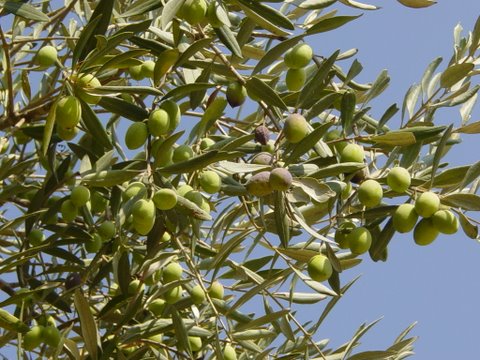
When we abide in the root we will bring forth much fruit
The Apostle Paul gives us end-day Christians this sound advice in Colossians 2:6-10:
So then, just as you received Christ Jesus as Lord, continue to live in him, ROOTED and built up in him, strengthened in the faith as you were taught, and overflowing with thankfulness. See to it that no one takes you captive through hollow and deceptive philosophy, which depends on human tradition and the basic principles of this world rather than on Christ. For in Christ all the fullness of the Deity lives in bodily form, and you have been given fullness in Christ, who is the head over every power and authority. (emphasis mine)
A BEAUTIFUL BIBLICAL EXAMPLE
The beautiful story of Ruth expresses for us most clearly what a proper attitude toward Israel should be. 5 This lovely woman seems to illustrate in her life most all the fruit of the Spirit mentioned by Paul in Galatians 5:22-23. Ruth was truly devoted to her Israelite mother-in-law. She loved her with a deep love and commitment that led her to forsake her own heritage and even her own country, in order to be with Naomi.
When Ruth arrived in Israel it was not with the feeling of superiority that so many Christians have today. Instead, “…she bowed down with her face to the ground…” (Ruth 2:10). She was willing to abase herself to a position lower than a servant girl (2:13). Her attitude was one of continual mercy and generosity as she shared her meager gleanings with Naomi (2:18).
The life of Ruth was also marked with obedience (3:5), kindness (3:10), holiness (3:10), discretion (3:14), and true love and commitment to Israel (4:15). Ruth said to Naomi: “… ‘Don’t urge me to leave you or to turn back from you. Where you go I will go, and where you stay I will stay. Your people will be my people and your God my God” (Ruth 1:16).
Perhaps in Ruth’s life we get a visual example of what the engrafting spoken of in Romans 11 is all about. If our lives could only be patterned after hers, we could then consider ourselves only as wild branches grafted into the tree of Israel (Rom. 11:17). Ruth was grafted right into the Messianic line. Like Ruth, we would fully understand that it is not we who support the root, but the root supports us (11:18).
Like Ruth, we would then have no room for pride, supersessionism, or other ideas that we have replaced Israel. There would be no room for boasting and arrogance (Rom. 11:18-21), as our Christian brothers and sisters have been so prone to do. Instead, we would be left with godly fear, (Rom. 11:20) and thankfulness for the Lord’s great mercies
to us (11:33-36).
STUDY QUESTIONS:
What are some things that have cut us off from our Hebrew heritage?
What does the olive tree illustrate about our heritage?
Explain the difference between roots and root.
What kind of attitude should we manifest as we approach Israel?
NOTES
1. Grolliers Interactive Encyclopedia, CD-Rom, 1992, 1993, 1994
2. Clarence Wagner, Israel Teaching Letter, Bridges For Peace, July 1995
3. Marvin R. Wilson,, Our Father Abraham (Grand Rapids, MI: William B. Eerdmans Publishing Co., and Center for Judaic Studies, Dayton, OH., 1989) p. 260.
4. Wilson, Our Father Abraham, p. 261.
5. Jim Gerrish, “Exploring Our Jewish Roots,” Jerusalem Prayer Letter, Bridges For Peace, August, 1990.
